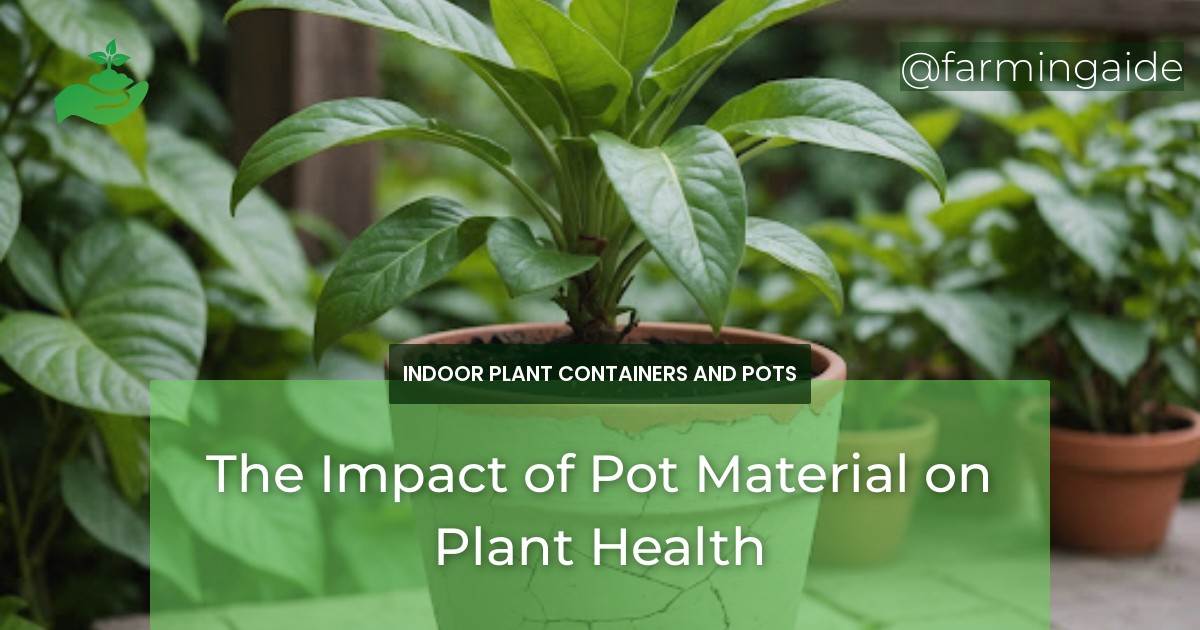When it comes to gardening, we often focus on the soil, sunlight, and water, but one crucial aspect that can make a significant difference is the pot material. The type of pot you use can affect your plant’s health, growth, and overall well-being. In this article, we’ll delve into the world of pot materials, exploring their properties, benefits, and drawbacks, and how they impact your plants. Whether you’re a seasoned gardener or a beginner, understanding the impact of pot material on plant health is essential for creating a thriving garden.
Key Takeaways
- The type of pot material can affect soil conditions, root development, and nutrient availability.
- Different pot materials have varying properties, such as water retention, drainage, and insulation.
- Choosing the right pot material can improve plant growth and health.
- Sustainability and environmental considerations should be taken into account when selecting pot materials.
- Understanding the impact of pot material on plant health can help you make informed decisions for your garden.
Introduction to Pot Materials
Pot materials can be broadly classified into two categories: natural and synthetic. Natural materials include terra cotta, wood, and bamboo, while synthetic materials include plastic, ceramic, and fiberglass. Each material has its unique properties, advantages, and disadvantages, which we’ll explore in detail.
Common Types of Pot Materials
Here are some of the most common types of pot materials:
| Pot Material | Properties | Advantages | Disadvantages |
|---|---|---|---|
| Terra Cotta | Breathable, porous | Allows for good drainage, affordable | Prone to cracking, heavy |
| Plastic | Lightweight, durable | Easy to clean, affordable | Can retain heat, may leach chemicals |
| Ceramic | Non-porous, durable | Easy to clean, attractive | Expensive, may be heavy |
| Bamboo | Biodegradable, breathable | Eco-friendly, lightweight | May degrade quickly, expensive |
Overview of Each Material’s Properties
In this section, we’ll take a closer look at the properties of each material and how they affect plant health.
How Pot Material Affects Soil Conditions
The type of pot material can significantly impact soil conditions, including water retention, drainage, and temperature regulation.
ALSO READ
Water Retention and Drainage
Different pot materials have varying levels of water retention and drainage. For example, terra cotta pots are porous, allowing for good drainage, while plastic pots can retain water, making them prone to waterlogging.
Soil Temperature Regulation
Pot materials can also affect soil temperature. Dark-colored pots, like plastic or ceramic, can absorb heat, while light-colored pots, like terra cotta or bamboo, can reflect it. This can impact root growth and plant development.
The Impact on Plant Growth and Health
The type of pot material can affect root development, nutrient availability, and overall plant health.
ALSO READ
Root Development and Support
The pot material can influence root growth and development. For example, terra cotta pots can provide good aeration, while plastic pots can restrict root growth.
Nutrient Availability
The pot material can also impact nutrient availability. For example, ceramic pots can leach minerals into the soil, while bamboo pots can provide a natural, nutrient-rich environment.
Environmental Considerations
When selecting a pot material, it’s essential to consider the environmental impact.
Sustainability of Pot Materials
Some pot materials, like bamboo and ceramic, are more sustainable than others, like plastic. Consider the environmental footprint of your pot material choice.
Recycling and Reusing Pots
Consider recycling or reusing pots to reduce waste and minimize environmental impact.
Choosing the Right Pot Material for Your Plants
When selecting a pot material, consider the specific needs of your plants.
Factors to Consider When Selecting Pots
Consider factors like climate, plant type, and personal preference when choosing a pot material.
Recommended Materials for Specific Plant Types
Some plants, like succulents, thrive in well-draining pots, like terra cotta, while others, like ferns, prefer more humid environments, like plastic pots.
Conclusion: Best Practices for Pot Selection
In conclusion, the type of pot material can significantly impact plant health, growth, and development. By understanding the properties and benefits of different pot materials, you can make informed decisions for your garden. Remember to consider the environmental impact, and choose materials that align with your values and plant needs.
By following these best practices, you can create a thriving garden that benefits from the right pot material:
- Consider the specific needs of your plants.
- Choose sustainable and eco-friendly materials.
- Recycle or reuse pots whenever possible.
- Monitor and adjust soil conditions accordingly.
By doing so, you’ll be well on your way to creating a healthy, thriving garden that benefits from the right pot material.


